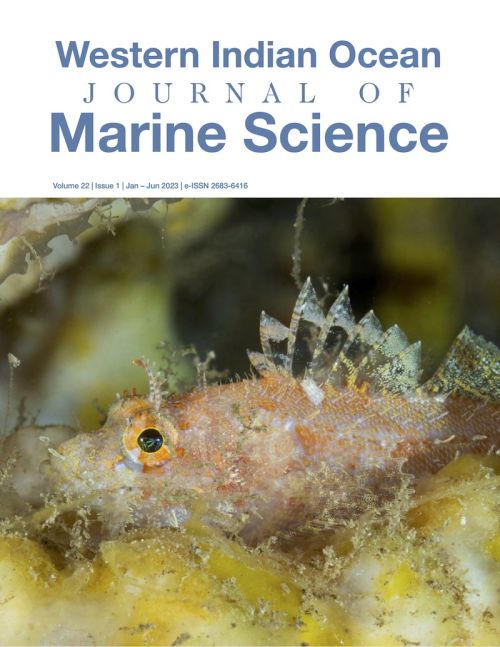Main Article Content
Seagrass cover reduction in Zanzibar from 2006 to 2019
Abstract
Seagrass meadows are abundant in Zanzibar, Tanzania and provide essential ecosystem services, yet they have been less researched or protected than other marine ecosystems. Evidence suggests that anthropogenic impacts, such as seaweed farming, small-scale fishing, and tourism, are their greatest threats. Using geographic information systems (GIS) to estimate seagrass cover, this study conducted Spearman’s rank correlation analyses to estimate correlations between the scale of seaweed farming, fishing, and tourism or the implementation of marine protected area (MPA) management plans, and the change in percent of seagrass cover from 2006 to 2019. On average, seagrass cover decreased by 10.98 % over this period. The scale of tourism was negatively correlated with seagrass cover (rs (9) = -0.64, p = 0.044). No other variables were correlated with declines, though seaweed farming had a weak protective effect on seagrass cover (rs(9) = 0.28, p = 0.426). To improve the management of seagrass meadows, plans must identify seagrasses as critical ecosystems, expand seagrass restoration projects, and address harmful practices in the tourism industry.






